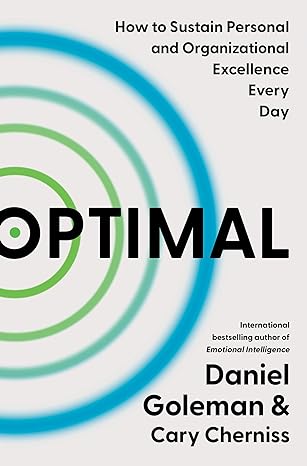
Leader to Leader, the Wiley quarterly journal where I am managing editor, has now published our Summer 2024 issue. I’ve included takeaways and sample quotes from each of the articles below. To catch up on the previous issue, be sure to check out my March 8 post, “17 Takeaways From Leader to Leader Spring 2024 Issue 112.”
In addition, also see my monthly newsletters, ‘What’s Happening in Leader to Leader,’ and our various virtual issues.
Ideally you will consider the content in our new issue to be perfect summer reading!
Find Common Ground and Bring Unity at This Time in History
Columnist: Sarah McArthur, Editor-in-Chief, Leader to Leader
Article: “Upholding the Leadership Lessons of The Little Rock Nine”
Sample quote:
Our visit’s purpose was to interview 33rd Chief of Staff (1995–1999) of the United States Army, Retired General Dennis J. Reimer, for our upcoming documentary film about the life, leadership and service of our journal’s founder, Presidential Medal of Freedom recipient Frances Hesselbein. Listening to this powerfully soft-spoken leader share his respect for Frances in stories of who she was, how she led, and the impact that she has had on all of us, including him, illuminated the challenge of our times. And that challenge is to find common ground and bring unity at this time in history when we are deeply divided and growing more so by the day.
How to Use EI When Dealing With Critical Challenges and Opportunities
Authors: Daniel Goleman and Cary Cherniss
Article: “Optimal Leadership and Emotional Intelligence”
Sample quote:
Given that emotionally intelligent leaders are more effective, more specifically how do those leaders use EI when dealing with critical challenges and opportunities? When we asked a group of such leaders to tell us how they did so, we found that the leaders often deployed their emotional intelligence competencies in similar ways.
The most frequent tactic was to use empathy—simply putting themselves into other’s shoes, so they could see the problem from the other person’s perspective.
Research by Jean Decety at the University of Chicago identifies three kinds of empathy, each based in different brain circuitry. Cognitive empathy means you understand how the other person thinks—you see the situation from their perspective. Emotional empathy lets you sense how they feel. And empathic concern has you want what is best for the person—as a leader this means you show your support (but stay within the guard rails of your organization).
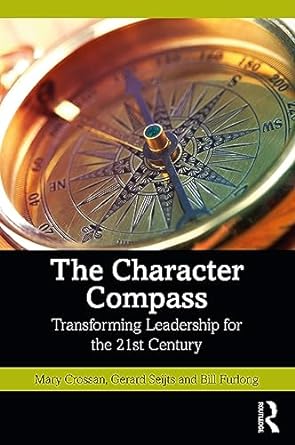
The Immense Opportunity for Strengthening Character
Authors: Mary Crossan, Corey Crossan & Bill Furlong
Article: “A Better Leadership Compass”
Sample quote:
As leaders, we have the huge responsibility to ensure the organization is set up to strengthen rather than undermine character. Who gets promoted, who gets rewarded, how senior leadership acts speaks volumes, and the processes and practices of the organization can serve to strengthen or undermine character. How often have you heard people say they cannot do something because of policy, only to find out the policy is ill-conceived or outdated? This is a time for “all hands on deck” when it comes to what it takes to exercise the strength of character needed, and begin to renovate and rejuvenate our organizations for the challenges that lie ahead.
Imagine any significant challenge or opportunity on both the personal and professional front, and you will begin to see the immense opportunity for strengthening character. However, there is plenty of work to be done to ensure that our organizations and society are a reflection of the strength of character we imagine, and that the very policies and systems that promote and sustain character are indeed strengthening, not undermining it.
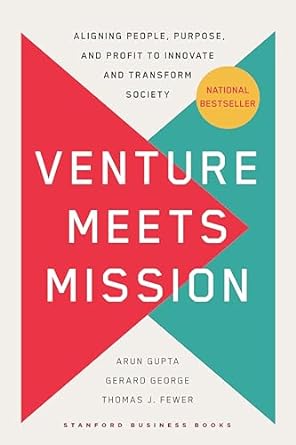
Different Emphases on Defining and Measuring Outcomes
Authors: Arun Gupta and Thomas J. Fewer
Article: “Mission Venturing: Democracy’s Superpower in the Innovation Race”
Sample quote:
Governments and ventures place different emphases on how they define and measure outcomes. The government tends to be significantly more focused on the processes of resolving problems than on the outcomes themselves. This is due to governments pursuing social objectives, and serving a defined social need, even when this may not be economically viable or advantageous. Conversely, ventures largely only measure outcomes, creating, measuring, and recreating financial benchmarks to evaluate the performance of the firm and the effectiveness of its managers. With different foci on the processes and the outcomes, entrepreneurs looking to work with the government should work to:
Understand the government’s problem and know the people burdened by it. The government does not always do the best job of explaining what their problems are, but knowing the people who need the solutions can expose you to more information about their problems, which can help you find the right- and best- answer.
Solve 100% of a specific problem, versus 80% of a larger problem. Focus on a very specific problem and deliver a comprehensive solution, versus delivering value around a niche aspect of the larger problem. Ventures that succeed in working with the government do not leave the government wondering how they can solve a larger problem; they make their smaller challenges disappear.
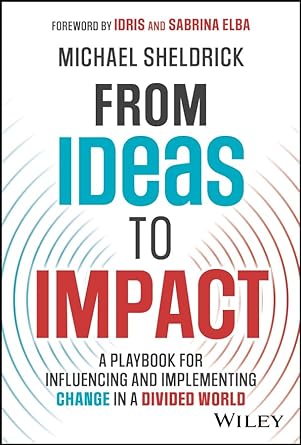
Visionaries Who Function as Both Diplomats and Implementers
Author: Michael Sheldrick
Article: “A Policy Entrepreneur’s 8-Step Guide to Turn Ideas to Impact”
Sample quote:
A “policy entrepreneur,” a term coined by political scientist John Kingdon, is more than just a “lobbyist for good” who positively influences legislation and government budgets. They excel at engaging those in power through direct advocacy, but they also know how to build diverse partnerships, craft compelling narratives, and seize opportunities amidst chaos. Some may be professional lobbyists or hold positions of power, and others might be leaders of communities and even entire nations in vulnerable circumstances looking to leverage the platforms of others. Yet, many also operate outside traditional structures. They are visionaries who function as both diplomats and implementers, championing innovative solutions that disrupt the status quo for the benefit of society as a whole, not just a select few.

A Total Immersion Approach to Projects
Author: Mitzi Perdue
Article: “The Art of Influence: A Lifelong Journey of Learning and Leadership”
Sample quote:
I’m not a fan of work-life balance. That concept may be just right for others, but for me, it’s a nonstarter. I’m part of the tribe that believes that “Nothing great is accomplished without passion.” When I’m working on a project that I believe in, I’m so involved in it that work becomes, in my way of thinking, way more fun than fun.
The times when I feel most fully alive and fulfilled are when I’m making progress on a cause I believe in. That can mean 18-hour days, and in the process, irritating friends and family to death because I don’t answer phone calls or socialize. Still, this total immersion approach to projects is what’s enabled me to write 27 books and close to 5,000 published articles.
This approach isn’t for everyone. It’s a tradeoff. But I’ve loved it, and it helps me achieve my life goals.
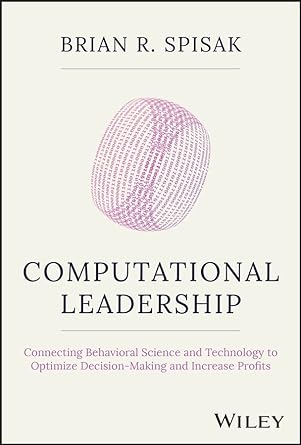
The Future of Leadership is Computational
Author: Brian R. Spisak
Article: “Computational Leadership: Remaining Innovative and People-Centered in the Age of AI”
Sample quote:
The future of leadership is computational. In particular, how people lead, follow, and generally go about their business will be augmented by AI. Most of what we do professionally and socially will be infused with AI, either operating seamlessly in the background or as a trusted co-pilot personalized to our wants and needs. AI is rapidly becoming as ubiquitous and essential as smartphones and email. That’s why computational leaders everywhere must make “responsible AI” a top priority. Harnessing the full power of AI while avoiding the many risks of this revolution demands an unwavering commitment to this principle.
But what does responsible AI even mean? It means not just adopting cutting-edge technology but doing so with a profound sense of duty. It also means ensuring that every innovation aligns with your organization’s values, treats your employees, your clients, and all your other stakeholders ethically, and safeguards against unintended consequences.
Remember, without a responsible AI framework, you’re not just exposing your organization to legal pitfalls, reputational damage, and economic/financial consequences, you’re compromising the trust of your most valuable assets—your people.

Embracing a More Holistic View of Ethics
Author: Alison Taylor
Article: “Rethinking Ethical Leadership in the C- Suite”
Sample quote:
Companies should never neglect the basics of compliance. But they must also manage the full spectrum of ethical commitments in practical ways. This poses particular challenges when you’re dealing with an increasingly vocal yet divided workforce. Many companies appreciate the scale and scope of these new challenges; compliance and sustainability executives are increasingly quartered in the C-suite. While this reflects how important it has become to bring their expertise into decisions on strategy and capital allocation, cross-functional integration is critical.
Notwithstanding dramatic shifts in how the broader world views business ethics, silos and incoherence persist in many companies. Sustainability was originally focused on going “beyond compliance” via such voluntary initiatives as reducing waste or energy use and organizing volunteer employee efforts. Much advice on how to build an effective corporate sustainability strategy implies—or flatly states—that legal compliance is merely a basic functional requirement. An array of pressures, from the regulation and professionalization of ESG {Environmental, Social, and Governance} reporting to employee activism and political backlash, suggest we need to go further. Some organizations are embracing a more holistic view of ethics, one designed for use by thinking, breathing human beings.
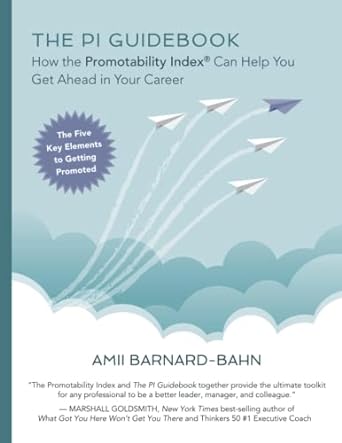
Sharing Difficult Events is Never Easy
Author: Amii Barnard-Bahn
Article: “Why Success Depends on Welcoming — Not Shooting — the Messenger”
Sample quote:
Chances are, you’ve had to make tough decisions as a leader and then had to deliver the bad news to others. Whether you’re communicating news of a layoff to your employees, missing quarterly goals to your executive team, or reporting a delay in a product launch to the board, sharing difficult events is never easy.
And, beyond how difficult it can be to share bad news, a recent study published by the American Psychological Association shows that those delivering negative news are not only seen as unlikable and less competent, but they are also perceived as desiring the negative event. People tend to make sense of news by connecting it to nearby events, and disliking a messenger is linked to mistakenly thinking that the messenger had bad intentions.
As I’ve served in multiple executive roles for 20+ years in Fortune 500 companies and nonprofits, and now as a C-suite coach and business ethics attorney, I’ve seen firsthand what happens when leaders deliver bad news. Everyone suffers—the people who receive the tough messages and the people who give them.
Self-Awareness, Empathy, Analytical Skills, and Strategic Alignment
Author: Sandy Seeber-Quayle
Article: “How Effective Thinking Habits Help Leaders to Be More Effective”
Sample quote:
The KUBA Pilot Strategy first emerged during an interview for a people development role where I presented my approach to training new managers. Drawing on my experience in results and management-related positions, my observations of diverse teams, and working with people from various backgrounds and cultures, I identified four core principles for managerial success: self-awareness, empathy, analytical skills, and strategic alignment.
To validate these principles, which formed the basis for the KUBA Pilot Strategy, I accepted an opportunity as an operations manager and succeeded within a high-paced, complex organizational setup in a highly regulated industry and challenging business partner relationships. My effectiveness in building trusting relationships, delivering objectives, and finding solutions within constraints led not only to recognition but also to a promotion. The strategy further evolved through my study of organizational behavior, which provided a strong theoretical foundation.
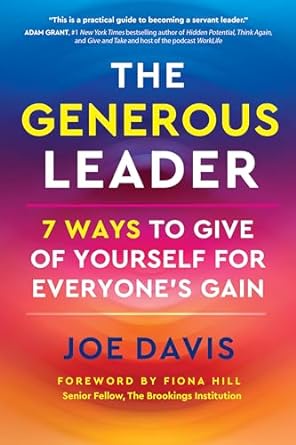
Thanking People in Real Time
Author: Joe Davis
Article: “Small Acts, Big Impact, Generous Moments”
Sample quote:
There are many ways to give thanks. Some people appreciate being called out publicly, so when you are in a large group gathering and you have a chance to thank those less tenured, in front of everyone, go for it! Thanking people in real time, one-on-one, with sincerity, is especially meaningful regardless of your level in an organization.
Taking the time to write a note of gratitude may have a lasting impact; any email or text will work to express your gratitude for those who helped you organize an event, accomplish a goal, or beat a sales forecast. When this is done outside the bounds of a performance review, it has significant value. When others are copied, if an email, it can multiply the positive feelings. Do not overthink it; I am talking about a note of gratitude for going above and beyond or recognizing an all-nighter (no doubt one of too many) that made a difference.
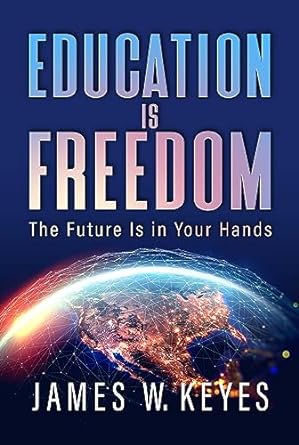
Nurturing the Culture of Intellectual Curiosity
Author: James W. Keyes
Article: “Learning to Learn: The Key to Leadership Success”
Sample quote:
Intellectual curiosity is the root of all knowledge. Curious learners are proactive and always asking questions. Other, more reactive learners, remember only information they find relevant. An essential element to developing solutions is proactive curiosity, the ability to explore and to constantly seek knowledge. The more curious we are, the more we will traverse life in a meaningful and connected way. Curiosity is the lifeblood of all innovation.
A company’s ability to differentiate will depend heavily on the curiosity of its product development team, constantly seeing new ways to satisfy the customer. Ultimately, a company’s ability to nurture that culture of intellectual curiosity will depend on the tone at the top. If leadership is curious and nurtures a culture of innovation and exploration, then the organization will follow. Curiosity is the jet fuel of learning and the inspiration behind effective leadership.
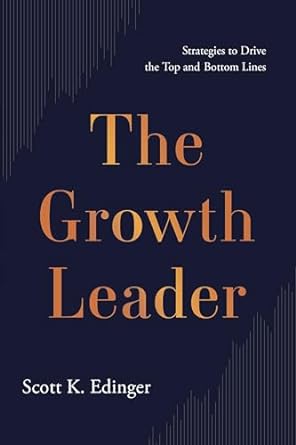
Avoiding the Micromanagement Trap
Author: Scott K. Edinger
Article: “Leading Strategy Execution”
Sample quote:
Leading results versus managing tasks is often a matter of distinguishing what to do from how to do it. When you lead results, you avoid the micromanagement trap and instill a sense of trust throughout the organization that helps people accomplish the tasks they own. Leading for results allows leaders to articulate the strategic initiatives and goals—your magnets—and requires a focus on topics like defining what you need to achieve, what you want people to do, what the performance expectations are, what reflects forward progress, and what priority is more important than another.
When the pursuit of major strategic goals and objectives devolves into the management of hundreds of workstreams, each project nested within those workstreams can easily become an end unto itself. It doesn’t matter what management system you are currently using—KPIs (key performance indicators), Hoshin plans and Agile development, SGD (strategic goal deployment), OKRs (objectives and key results), or a host of others. If your attention is focused on the framework, then you are already lost in the minutia. For executives, the opportunity lies in your ability to simplify, to stay above the water when outlining the results that you are seeking with the strategy that you have outlined.

Co-Producing Strategies for Safety
Authors: Frances Frei and Anne Morriss
Article: “Make it Safe to Be Different – But Don’t Stop There”
Sample quote:
Safety is rarely equitably denied, which is why we advise companies to start their efforts here and focus on protecting and empowering the people who are most likely to experience the absence of safety. Sometimes, the lack of safety lines up with a demographic profile, but often it does not. For example, if your frontline teams are most likely to be harmed at the height of a viral pandemic, then they get to jump to the front of the inclusion line.
A common application of this principle is that you must confront the reality that female workers, people of color, and LGBTQ+ employees (particularly your trans colleagues) have a higher risk of being sexually harassed in the workplace than other demographics. Your colleagues who check two or more of those boxes are at the highest risk.
Organizations need clear-eyed strategies for preventing and addressing sexual misconduct that acknowledge these kinds of facts, reinforced by a culture that refuses to tolerate them. How do you get this right? Involve the people most likely to be harmed in co-producing the strategies designed to serve them.
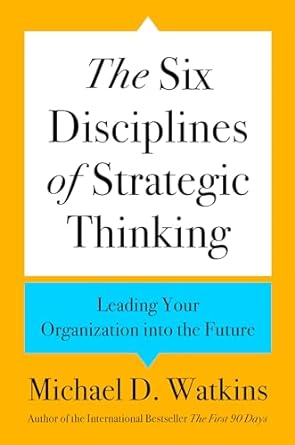
Writing Down Observations and Insights for Visioning
Author: Michael D. Watkins
Article: “The Discipline of Visioning For Leaders”
Sample quote:
You can become better at visioning—through intentional observation, imaginative visualization, and clarification. One technique for developing visioning ability is the architect’s exercise. Every time you enter a new home or office, take a few minutes to think about how you would change the space to make it a more attractive place to live or work. As you do this, write down observations and insights as the basis for reflection. Keeping a journal of thoughts can help capture insights and spark ideas for other concepts. By exercising the visualization “muscle” in this and other ways, you will build your capacity for envisioning potential futures for your organization.
Another helpful process is organizing a “visioning workshop,” where you and your team meet off-site to envision the enterprise’s future collectively. You do this by separating participants into small groups where each person describes the scene in their mind’s eye. Each team member collates these images and presents them to the whole workshop. The process helps individual leaders clarify their thinking and provides a sense of what degree of change the top team might accept. This can help leaders shape a commonly held vision of the future while staying more in control of the visioning process. The downside is that visioning workshops involving just top leaders may not engage subordinates. Engaging others early on can help build organizational commitment, though some leaders may not wish to share a vision until it is fully formed.

Self-Reflection for Increasing Awareness Skills
Author: Kandi Wiens
Article: “Awareness: A Tool for Burnout Immunity”
Sample quote:
Whatever our reasons, many of us resist practicing self-awareness or feel we don’t have the luxury of doing so, all the while unwittingly escalating our risk of burnout and missing out on one of the best tools for effective leadership. But the truth is, we can’t afford not to devote some time to self-reflection and increasing our awareness skills, for our own sake as well as for those we lead. Awareness, as it turns out, is one of the best ways to successfully manage workplace stress, and to both prevent and recover from burnout.
In my academic work, I’ve conducted multiple studies on leaders in high-stress roles, and in study after study, I found there was always a contingent of people whose daily workplace stress was so high (7 or above on a 10-point scale) and so unrelenting that we’d expect a number of them to be burned-out, or at least at a high risk of burnout. But these leaders showed no signs of it. What was going on? And was there some sort of protective “X factor” they all had that could be isolated and taught to others?
Article: “Becoming Aware of New Ways For Meeting Societal Grand Challenges”
Sample quote from Sven Kunisch (Department of Business Development and Technology, Aarhus University, and Herman Aguinis, School of Business, The George Washington University):
Review articles can be used by different audiences, including researchers in the area reviewed in the article, researchers in other areas, practicing managers, and policymakers. So, they are useful for both research creators and users. Thus far, they are predominantly produced by management scholars for management scholars. In the article, we argue that there is excellent potential to produce review articles together with other stakeholders of academic knowledge, including practicing managers and policymakers. Decades ago, practitioners used to co-author articles with researchers, and many were members of the editorial boards of journals. None of these things are happening anymore. We hope that journal editors and researchers will take advantage of the enormous potential of research-practitioner collaborations.
